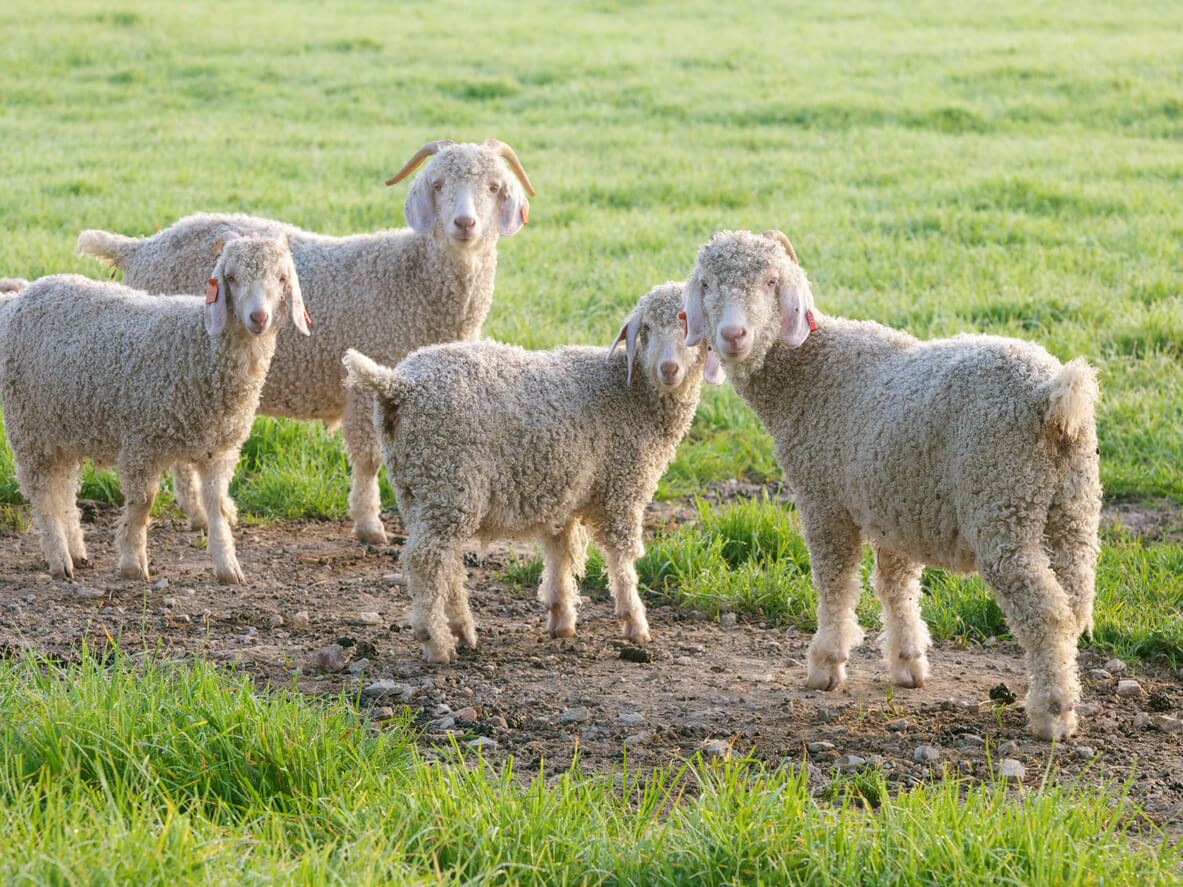
Climbing Skins - The Rundown
What is mohair?
Mohair is a yarn made from the hair of Angora goats. Mohair is very durable and resilient, and the thicker and coarser hair of older goats is what is used to make climbing skins. All the ski-mountaineering racing skins are made out of 100% mohair fibres. However, nylon fibers are often added for recreational ski touring. Why? Mohair has low friction which means great glide but less grip. Nylon helps increase grip and abrasion resistance for situations where speed isn’t the biggest concern. Most “mixed” skins have a 30 to 35 percent nylon content.

How important is glide?
We often hear skiers say that they don’t need glide, that their priority is grip. But glide isn’t just for Skimo racers! The friction when you slide your ski forward on the skin track is glide. Lower friction means less effort to glide that ski forward. With thousands of steps a day, this adds up quickly. More glide also means free speed and less effort on flatter terrain. All skiers benefit from better glide when it comes to skins, and how much grip you really need depends on lots of factors that external to the skins you use. For example, your weight distribution on your skis, how much you use the risers or the skintrack condition all have a huge impact on grip. Good “skinners” are almost always able to get great traction even on the fastest and slipperiest skins, while beginners will sometimes struggle on the grippiest skins.
And what about glue?
Glue is a bit of a secret thing for skin companies. Pomoca, Colltex, Contour and others each have their own formula to ensure that the skins will properly stick to your skis when you’re out there. At the same time, if the glue is too sticky, it gets really difficult to separate a folded skin. The balance between user-friendliness and stickiness is tricky to find. Some skins are easier to rip, fold and use while others will bond to bases like crazy glue. Your needs as a skier are ultimately what will decide what kind of glue works best for you.
Companies have been working on “hybrid” skins for a few years. Results are promising in some cases, but in general these hybrid, non-sticky skins tend to have some issues in cold or very wet weather. Classic hot-melt skins still require less care and are at a lesser risk of failing in tricky conditions. At the moment, we think that the Contour hybrid skin formula is the more reliable skin among those new-generation products.

So, what are the best skins then?
The short answer to this question is that there isn’t a “best skin” per say. Just like bindings, skis and boots, the best skin for you depends on what your skiing is like. At SkiUphill, we agree to say that European manufacturers make fantastic skins. Great grip, great glide, great glue, now you can choose all three with brands like Pomoca, Colltex, Kohla and Contour. When it comes to skinning, Euros have it figured out!
Why choose Pomoca?
- The Pomoca glue is hands down the most user-friendly glue on the market. You'll never need a friend to help you separate a folded skin. The glue will work perfectly in everything but the coldest and driest weather if your day includes lots of transitions.
- These skins glide beautifully, yet their nylon-mohair blend offers second-to-none grip. The S-Glide has a durable treatment that prevents icing and snow build-up on warmer Spring days.
- Pomoca skins are lightweight, packable and flexible.
- The Race skins come in wide (100 mm and 120 mm) width, which is the closest thing to cheating on the skintrack. A staff's favourite!
Why choose Colltex?
- The hot-melt glue on Colltex skins are outstanding in cold and dry weather. Perfect for multi-day trips in the Rockies!
- Colltex's new skins are thin and packable.
- The 100% mohair formula is extremely fast, yet very grippy.
Why choose Contour or SkiTrab?
- The mohair/nylon blend from Contour is a true "4x4". The mix skin grips like the highest of the high traction skins, but they still glide almost as well as 100% mohair skins.
- Contour/SkiTrab skins are fantastic in fresh snow, especially their 100% mohair.
- Their thicker construction gives them great durability and resistance to abrasive snow conditions.
- No need to care about Contour and SkiTrab skins. They will be reliable for years and years with little to no maintenance.



